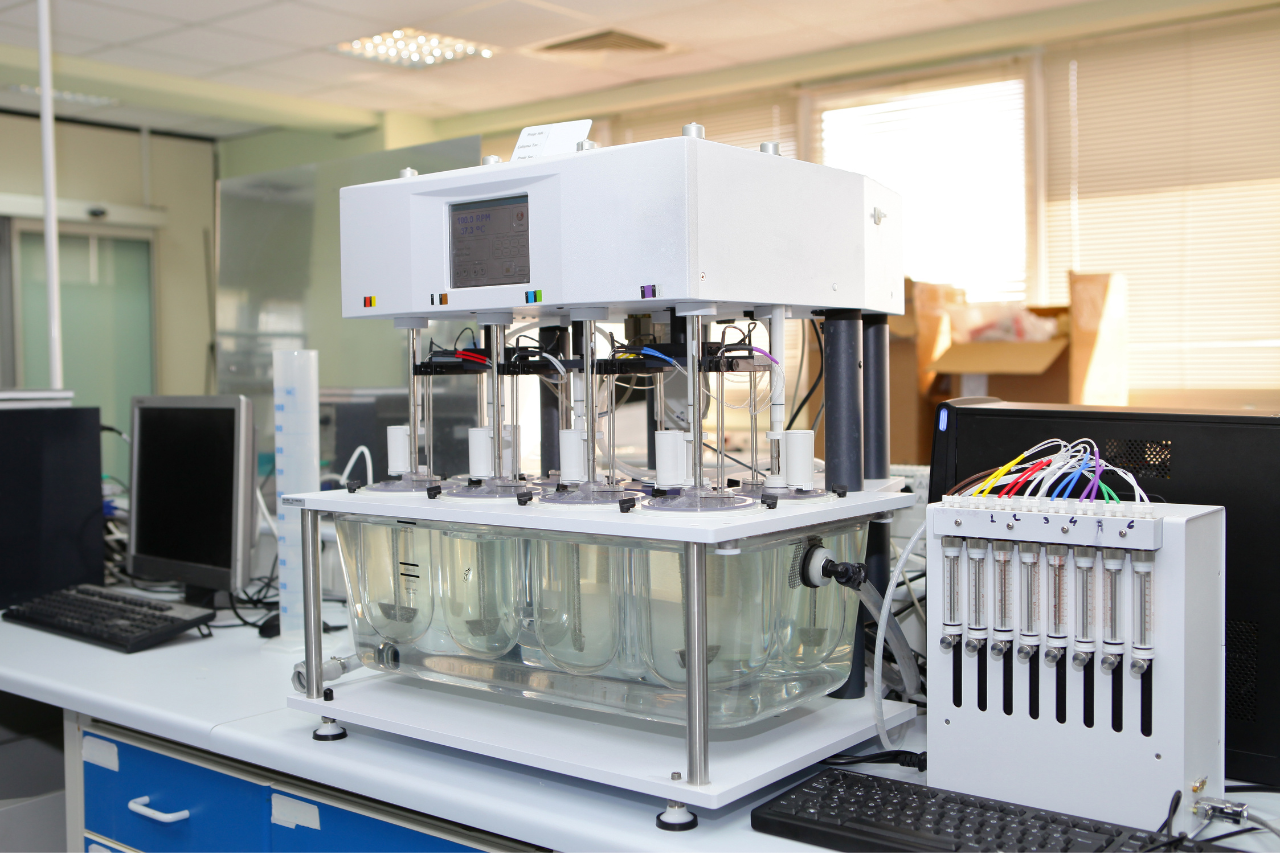Tablet dissolution testing is a crucial step in the pharmaceutical industry to ensure oral solid dosage forms’ quality, safety, and efficacy. It measures the rate at which a solid dosage form dissolves under standardized conditions. The United States Pharmacopeia (USP) provides guidelines and standards for dissolution testing to ensure consistency and accuracy across different drug products. In this beginner’s guide, we’ll explore the basics of tablet dissolution testing, including its importance, methods, and the role of the USP.
Introduction to Tablet Dissolution Testing
Tablet dissolution testing is essential because it helps assess the release profile of active pharmaceutical ingredients (APIs) from solid dosage forms such as tablets and capsules. The dissolution rate and extent can impact the drug’s bioavailability, which in turn affects its therapeutic efficacy. By simulating the conditions of the gastrointestinal tract, dissolution testing provides valuable insights into how a drug will behave in the human body.
The USP and Dissolution Testing Standards
The USP is a non-profit organization that sets quality standards for medicines, dietary supplements, and food ingredients. It publishes the USP-NF (United States Pharmacopeia–National Formulary), which contains official standards for pharmaceuticals, including methods for dissolution testing.
Understanding the Dissolution Methods Database
The Dissolution Methods Database provided by the USP is a valuable resource for researchers, pharmacists, and manufacturers. It allows users to search for dissolution and disintegration test conditions for specific drug articles based on monograph name, dissolution medium, apparatus type, test duration, and analytical finish.
Key Parameters in Dissolution Testing
- Dissolution Medium: The composition of the dissolution medium is critical as it mimics the conditions of the gastrointestinal tract. It can include ingredients such as buffers, surfactants, and enzymes to simulate different pH levels and fluid dynamics.
- Apparatus Type and Conditions: The USP specifies different types of dissolution apparatuses (e.g., paddle, basket, flow-through) and their operating conditions (rotation speed, dip rate) based on the characteristics of the drug product.
- Test Duration: The duration of the dissolution test determines how long the tablet or capsule is exposed to the dissolution medium. This parameter is typically specified in the USP monograph for each drug product.
- Analytical Finish: The method of analysis used to measure the concentration of the drug substance in the dissolution medium. This can include UV-visible spectroscopy, high-performance liquid chromatography (HPLC), or other analytical methods.
Common Challenges in Dissolution Testing
- Variability: Variations in test conditions, equipment calibration, and sample handling can introduce variability in dissolution results.
- Sink Conditions: Ensuring a sufficient volume of dissolution medium relative to the amount of drug substance released to maintain sink conditions is essential for accurate dissolution testing.
- Method Validation: Validating dissolution methods to ensure accuracy, precision, specificity, and robustness is critical for compliance with regulatory requirements.
Types of Tablet Dissolution Testing
Here are the different tablet dissolution testing methods and their significance in pharmaceutical analysis.
1. Apparatus-Based Dissolution Testing
Apparatus-based dissolution testing involves using specific equipment to measure the rate and extent of drug dissolution from tablets or capsules. The United States Pharmacopeia (USP) defines several apparatus types, including:
- Paddle Over Disk (USP Apparatus 2): This apparatus consists of a paddle that rotates within a vessel containing the dissolution medium. It is commonly used for immediate-release dosage forms.
- Basket (USP Apparatus 1): The basket apparatus features a mesh basket that holds the dosage form while immersed in the dissolution medium. It is suitable for dosage forms that float or adhere to the vessel walls.
- Flow-Through Cell (USP Apparatus 4): This apparatus is used for modified-release dosage forms and allows continuous flow of the dissolution medium through the dosage form, simulating physiological conditions more accurately.
2. Non-Apparatus-Based Dissolution Testing
In addition to apparatus-based methods, non-apparatus-based dissolution testing techniques are also employed in certain situations:
- Dissolution Profiling: Dissolution profiling involves sampling the dissolution medium at multiple time points and analysing the concentration of the drug substance over time. This approach provides a detailed understanding of the dissolution behaviour of a dosage form.
- Intrinsic Dissolution Testing: Intrinsic dissolution testing measures the dissolution rate of pure drug particles without excipients. It provides insight into the inherent solubility characteristics of the drug substance.
3. Biorelevant Dissolution Testing
Biorelevant dissolution testing aims to simulate conditions in the gastrointestinal tract more accurately. This approach considers factors such as pH, fluid dynamics, and the presence of surfactants and enzymes to mimic physiological conditions and predict in vivo performance.
4. Quality Control Dissolution Testing
Quality control dissolution testing ensures batch-to-batch consistency and compliance with regulatory standards. It involves testing samples from production batches to verify that they meet predetermined dissolution specifications.
Conclusion
Tablet dissolution testing is a vital quality control measure in the pharmaceutical industry, providing valuable insights into the performance of oral solid dosage forms. Understanding the principles of dissolution testing, the role of the USP, and utilising resources such as the Dissolution Methods Database can help researchers and manufacturers ensure the safety, efficacy, and quality of pharmaceutical products. By adhering to standardised dissolution testing protocols and addressing common challenges, stakeholders can enhance product quality and improve patient outcomes.


